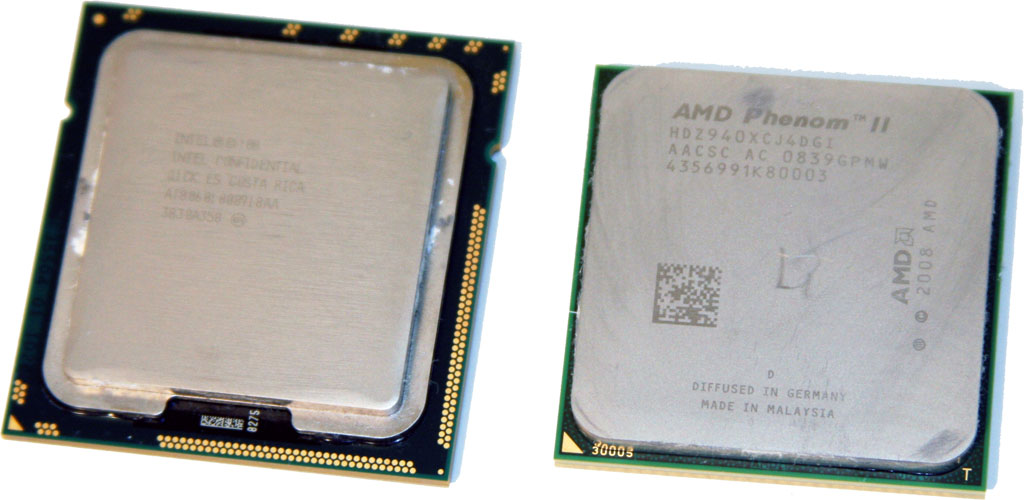Overclocking: Core i7 Vs. Phenom II
Introduction
This match-up needs no introduction—but I’m going to throw one down anyway.
It’s no secret that Intel has dominated our performance tests over the past year. First, its Core 2 Duos at 45 nm gave enthusiasts a great platform for aggressive, yet relatively safe overclocking. The company’s Core 2 Quads cost quite a bit more, but they managed to deliver smoking speeds in the applications optimized for multi-threaded execution.
The recent Core i7 launch further cemented Intel’s position as the performance champion. Its Core i7 965 Extreme, clocked at 3.2 GHz, demonstrated gains straight across the board versus its outgoing flagship, the Core 2 Extreme QX9770. And the Core i7 920, Intel’s sub-$300 entry-level model running at 2.66 GHz, seems to have little trouble reaching up to 4 GHz on air cooling.
There was once a time when Intel didn’t handle its technology shifts as smoothly. As recently as the Pentium 4 Prescott core (OK, that was a while back), Intel struggled to maintain an advantage against AMD’s Athlon 64. But now, with the marketing of its "tick-tock" approach to rolling out lithography advancements and micro-architecture tweaks, things have certainly turned around. How is AMD expected to compete?
Up until now, AMD has relied on the loosely-translated term "value" to keep in the game. On its own, the Phenom X4-series is a moderate performer. AMD knows this, and has priced the chip more competitively than Intel’s quad-core offerings to attract attention. However, the Phenom hasn’t had to exist alone in an ecosystem backed by third-party vendors. It’s instead complemented by AMD’s own chipsets, mainly the 790GX and 790FX. Of course, those platforms extend comprehensive CrossFire support for its own graphics cards, which have been capturing hearts since mid-2008.
Combined, AMD’s processors, chipsets, and GPUs have fared better than any one of those components would have alone. Thus, we’d consider the company’s efforts to emphasize its Spider platform—the cumulative result of all three puzzle pieces—a success.
AMD Needs Something New
Get Tom's Hardware's best news and in-depth reviews, straight to your inbox.
In light of a new competitive challenge—Intel’s Core i7—AMD is revamping its Spider platform with a new processor and the addition of software able to tie all of the hardware together. As you no doubt already know from reading Bert’s story, this latest effort is called Dragon.
But we’re not here to rehash the details of Phenom II. Rather, in light of significant enhancements to the CPU architecture’s overclocking capabilities (and indeed, confirmation from AMD that all of the "magic" that went into its ACC [Advanced Clock Calibration] technology is now baked into Phenom II), we’re eager to compare the value of AMD’s fastest 45 nm chip to Intel’s entry-level Core i7 920—the one most enthusiasts would be likely to eye as an overclocking contender.
In the pages that follow, we’ll describe how each platform was overclocked, just how hot each system got, how much they cost, how well they perform at their top speeds, and, ultimately, which should be on the short list for your next upgrade.
Current page: Introduction
Next Page Intel’s Core i7 Platform, Configured, And Priced
